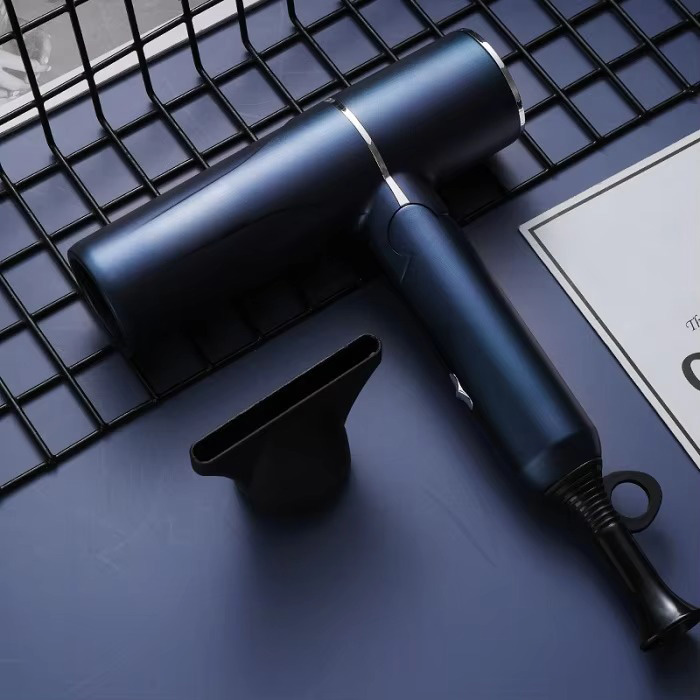In beauty devices, hair styling tools and personal care appliances, customer expectations might be high, but our self-discipline is higher. Consistent product quality is not only just a commitment, but also is the foundation of trust.
For Huux, a manufacturer committed to innovation in hair styling and beauty products such as electric hair clippers, electric shavers, hair straighteners, hair dryers, curling irons, hot air brushes, and face brushes. Quality management requires insights that go beyond observation. It needs organizational tools for deeper analyses.
Among the Seven Basic Tools of Quality Control we use in Huux, Stratification stands out as a powerful method for uncovering hidden details in data variation and supporting organizational behavior decisions.
What is Stratification?
Stratification is a statistical and analytical technique used by engineers in Huux, to separate complex data into smaller groups. By organizing data according to its relevant variables, stratification makes subtle changes visible.
The method originally comes from statistical classification analysis and was later refined by Japanese quality management pioneer Kaoru Ishikawa. Since then, stratification has become widely applied not only in manufacturing, but also in optimizing the production line etc.

Why Does Huux Choose Stratification?
Manufacturing hair styling products like hair straighteners, curling irons, and hot air brushes, they are very sensitive to subtle changes in production conditions. A small deviation in products’ viscosity, heating and cooling, or just malfunctioning twists and turns, could influence our consumer’s experience.
Stratification helps Huux’s engineering team with quality control, by managing these risks:
- Revealing Subtle Differences in Complex Data
Let’s take Huux’s electric hair clippers production line as an example. According to our engineer’s experience, an overall defect rate of 5% may seem manageable, but when this process is stratified by the production shift, it may reveal that day shifts could have an average rate of 2%, while night shifts could climb up to 8%. Without stratification, such conclusion would be lost in data analysis. - Getting to the Root of Causes
Instead of addressing a vague “defect issue”, stratification narrows the scope to specific variables, such as a mis-calibrated machine or an inexperienced operator. For further explanation, take Huux’s face brush manufacturing line as an example. If we stratify the device gear by gear, and analyze each, we will find the specific malfunction in substations, avoiding changing the whole production line. - Providing Actionable Insights for Decision-Making
Based on the two examples given above, it is easy to understand that stratified data provides supporting evidence for decision making. Whether it is adjusting machine parameters, revising supplier and quality standards, or improving operator training.

What Dimensions Are Stratified in Huux Beauty Product Manufacturing?
The effectiveness of stratification lies in selecting the right analytical dimensions. In Huux’s beauty device manufacturing process, such as electric shavers and hair dryers, common stratification dimensions might include the following:
- By Production Line
Even when equipment is standardized, parallel production lines can still lead to different results. For example, an overall consistent production rate may lay around 94%, however, stratifying by production lines can reveal that Line A may consistently achieve a 98% production rate for electric shavers, while Line B lags at 90%. - By Equipment or Machine
Even identical machines or assembling equipment can perform differently due to its wear, service life, or environmental conditions. Stratification at equipment or machine level, may highlight when machine must be maintained or send to repair. - By Shift or Operator
Despite Huux’s professional training system, human factors matter and could deviate a lot among different operators. Stratification by working shift or operator experience can show that certain shifts might produce with a more consistent efficiency. This often relates to fatigue, hand-down processes, or training gaps, which could all be improved later. - By Raw Material Batch
Hair dryers vary depending on the materials it uses. They rely on physical and functioning gears that can really vary by batch or supplier. Stratification helps to isolate whether inconsistencies in its functioning stability or product appearance correlate with specific material batches. - By Environmental Conditions
Temperature and humidity shifts in the production environment can impact product outcomes. Huux stratifies data by season and climate conditions, it reveals hidden trends in employee’s performance and machine stability.
How is Stratification Carried out at Huux?
Now that we have introduced to you, how stratification is carried out through our hair straighteners, curling irons, and hot air brushes, electric hair clippers, face brushes, electric shavers and hair dryers production line, let us now explain to you how stratification is carried out in Huux.
- Set the Objective
Huux’s engineers always begin with clarity. Is the goal to improve production rate by efficiency? Or by employees working shifts? Clear objectives determine the right stratification dimensions. - Select Key Stratification Factors
Choose the most relevant dimensions, given above as production line, equipment or machine, shift or operator, raw material, or by environmental conditions. Over-stratifying might dilute the dataset and create disturbance in data analyzing. - Collect and Tag Data
Huux engineers then ensure that the data is recorded with sufficient detail. Digital systems or structured check sheets could ask for data information on shift, machine number, material batch, and operator ID. - Perform Comparative Analysis
Use statistical methods to compare different stratified groups. For further explanation, here are a few suggestions provided by our engineers:- Defect rates (%) per line, shift, or batch
- Process capability indices (CPK) by equipment
- Mean/variance analysis across shifts
- Interpret Results and Take Action
Once significant differences are identified, Huux’s quality manager would conduct root cause analysis with their team, using tools like fishbone diagrams, to make organizational decisions.
A Huux Prospect: Stratification and Smart Manufacturing
As Huux continues to keep up speed with AI-driven analytics, stratification remains a foundational practice. Huux is upgrading our game. Modern digital systems can automatically stratify data in real-time, detecting abnormal activities by equipment, shift, or supplier. This leads to predictive measures, alerting managers before problem escalation.

Conclusion
For Huux, excellence in hair styling and beauty products is defined not only by creativity but also by strict quality. Stratification empowers teams to digest complex data, expose hidden differences, and take effective measures with thinking ahead. By embedding this tool alongside advanced analytics, Huux ensures that our customers may receive products both beautiful and reliable with a promise of consistency.







